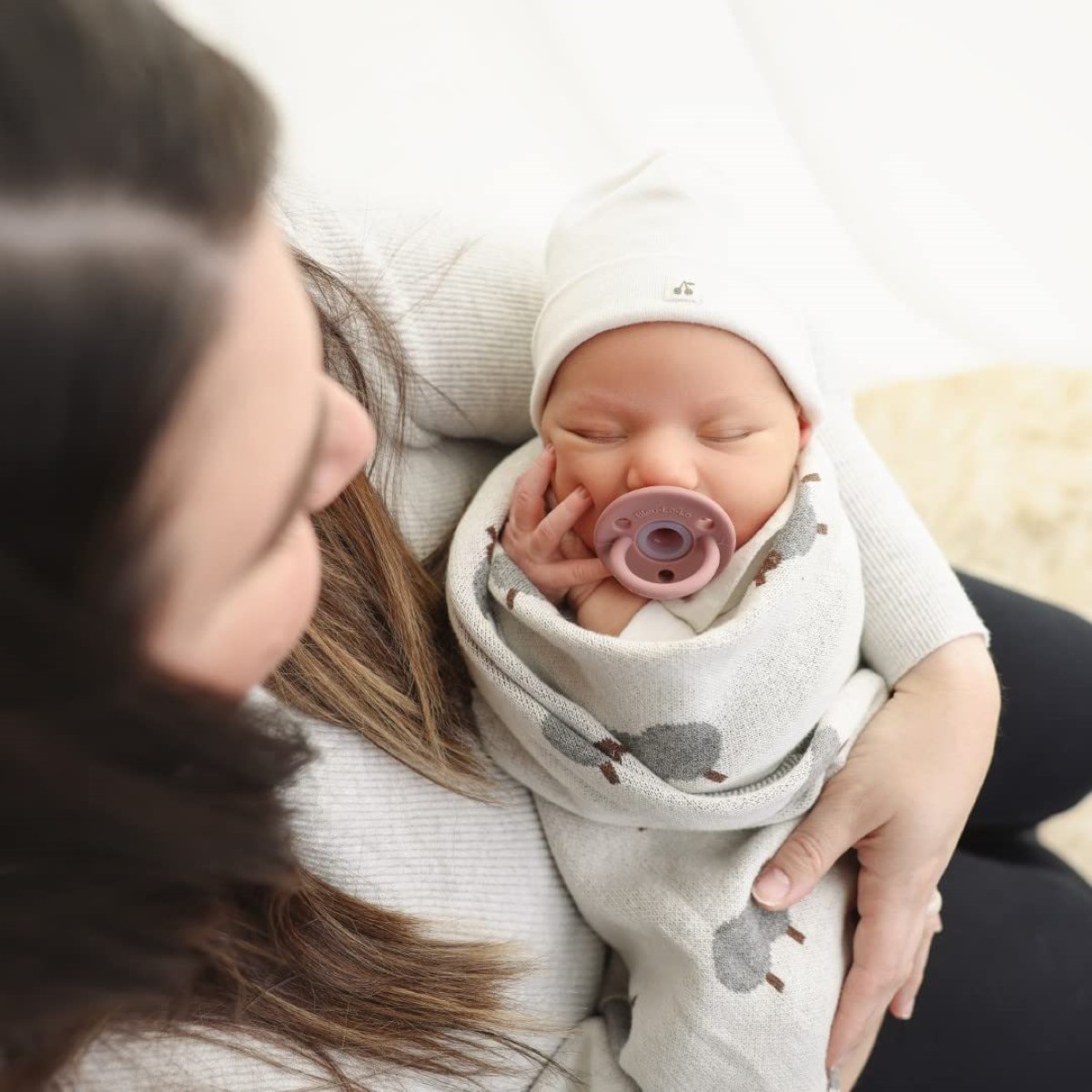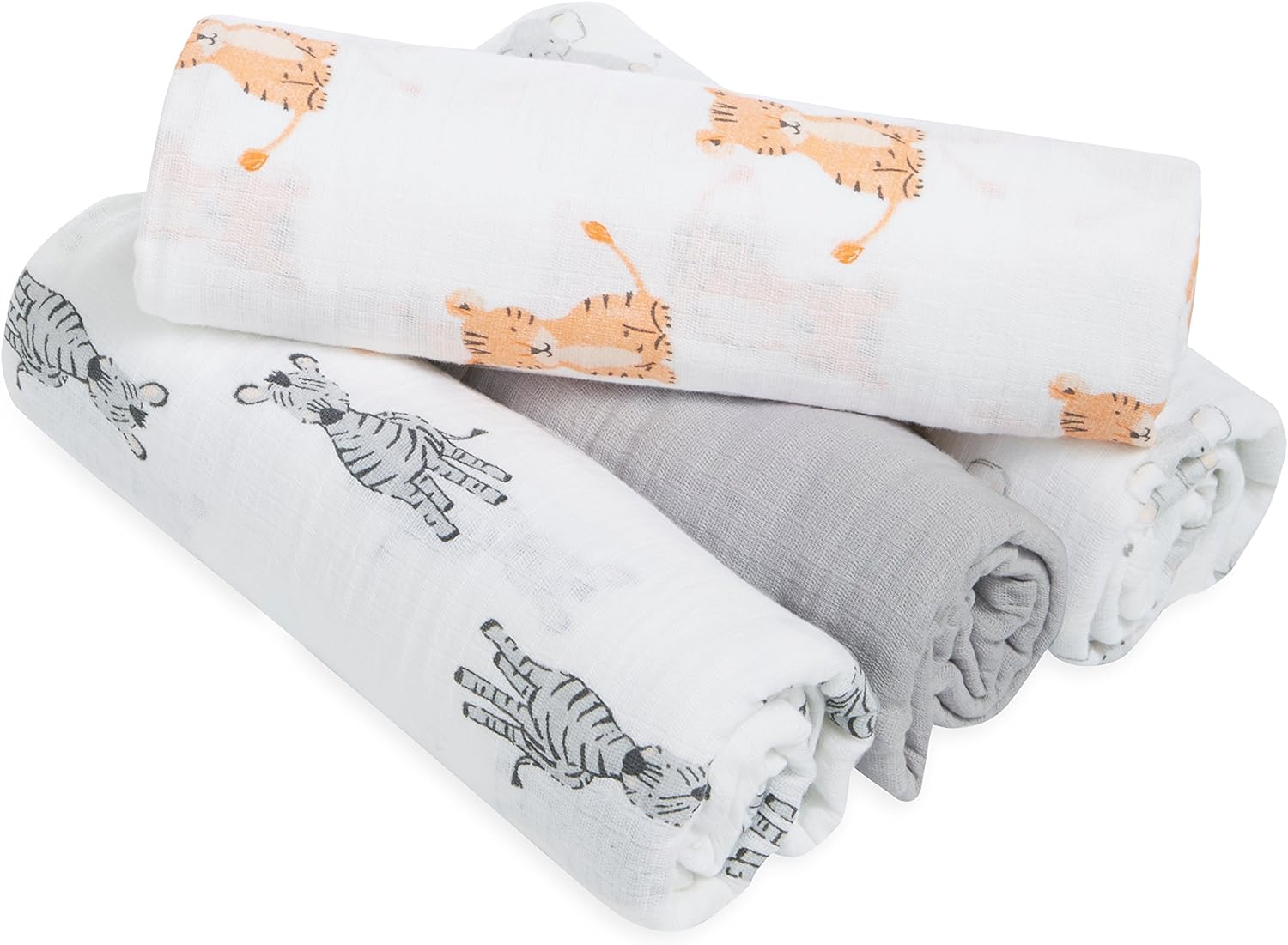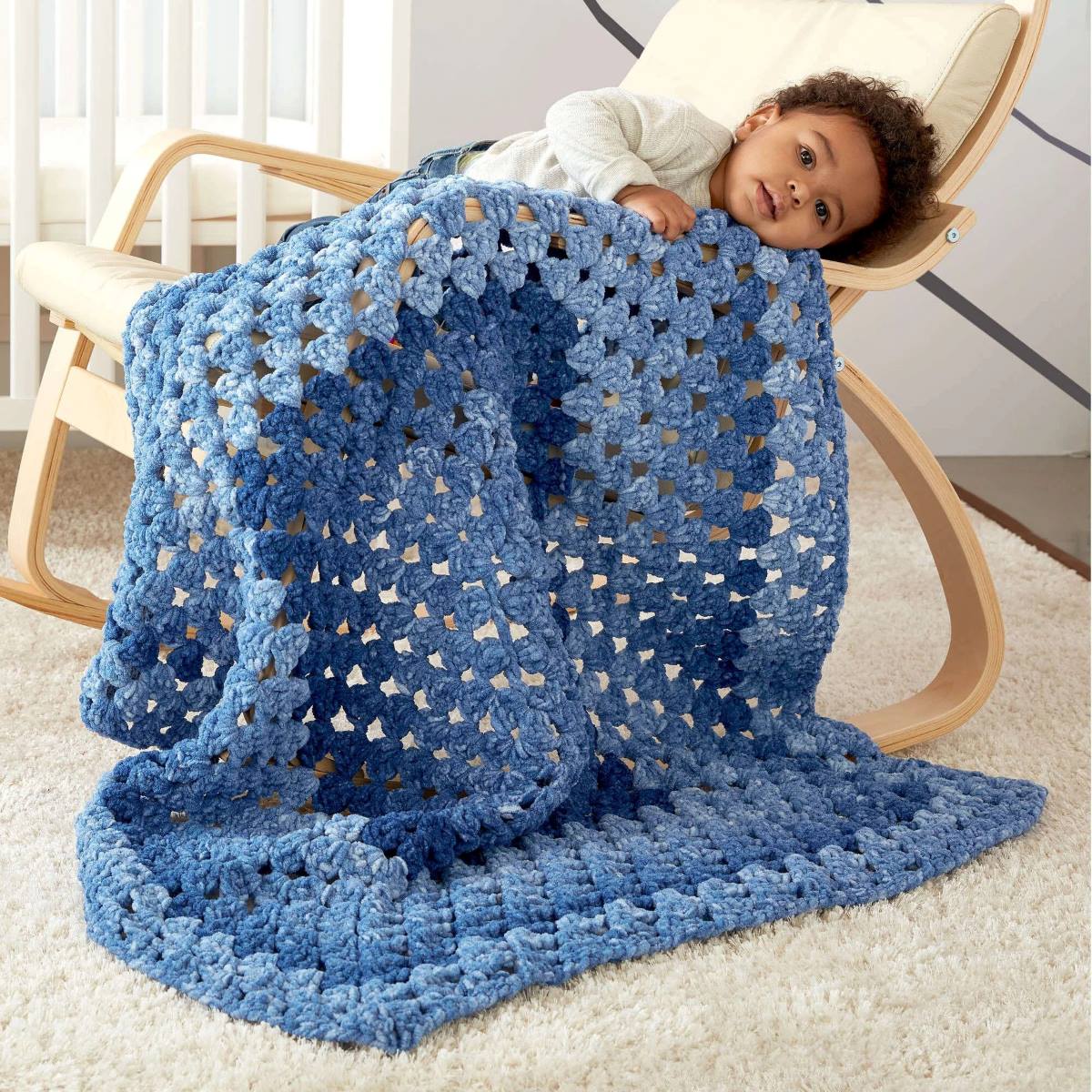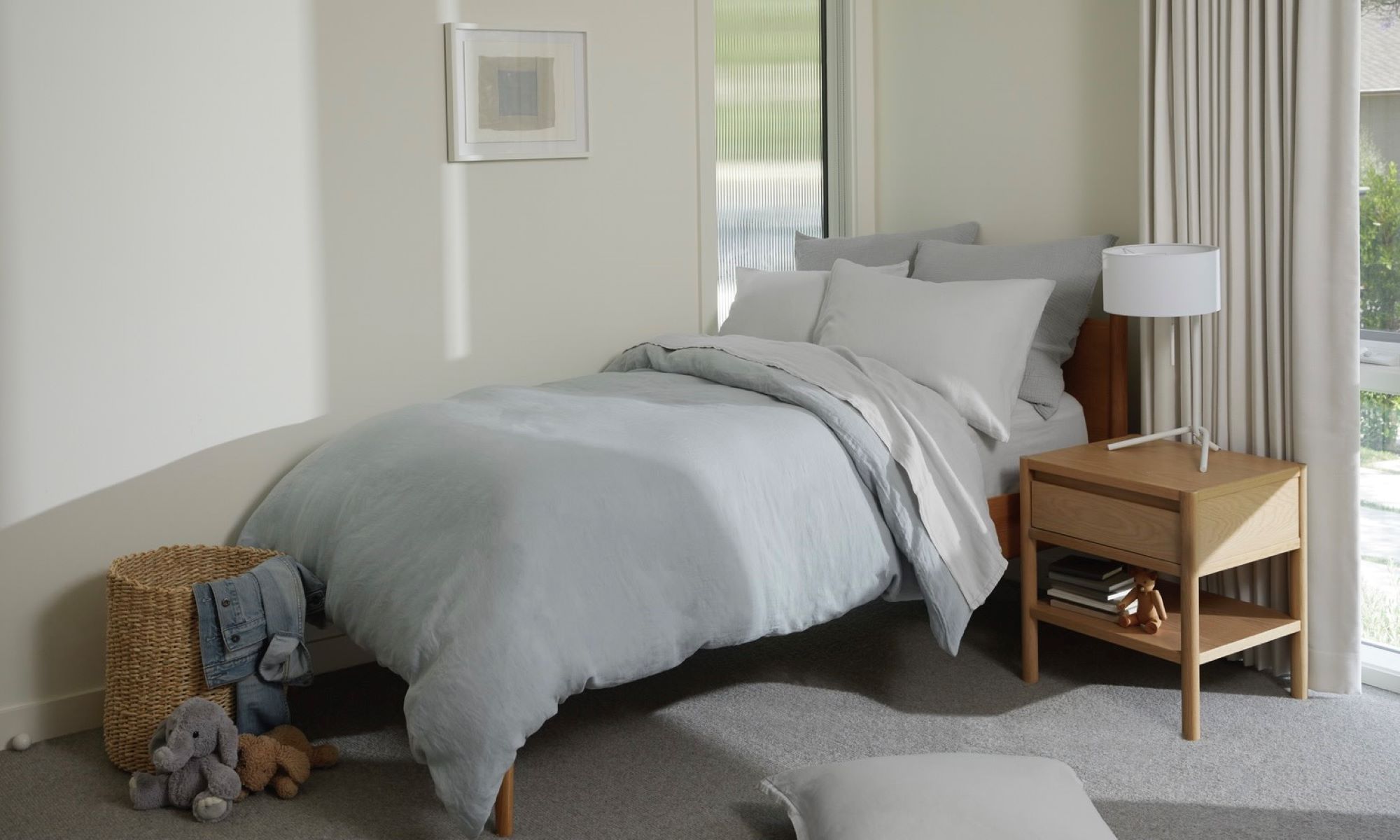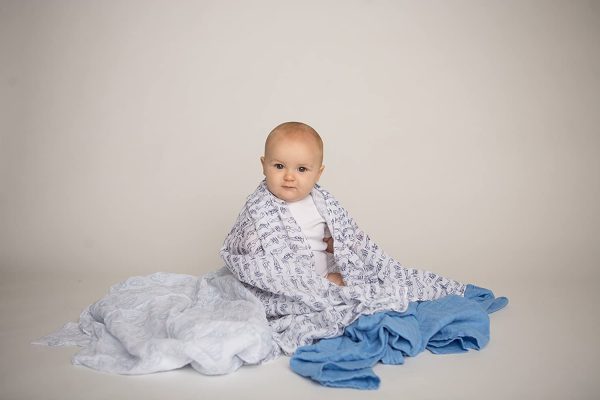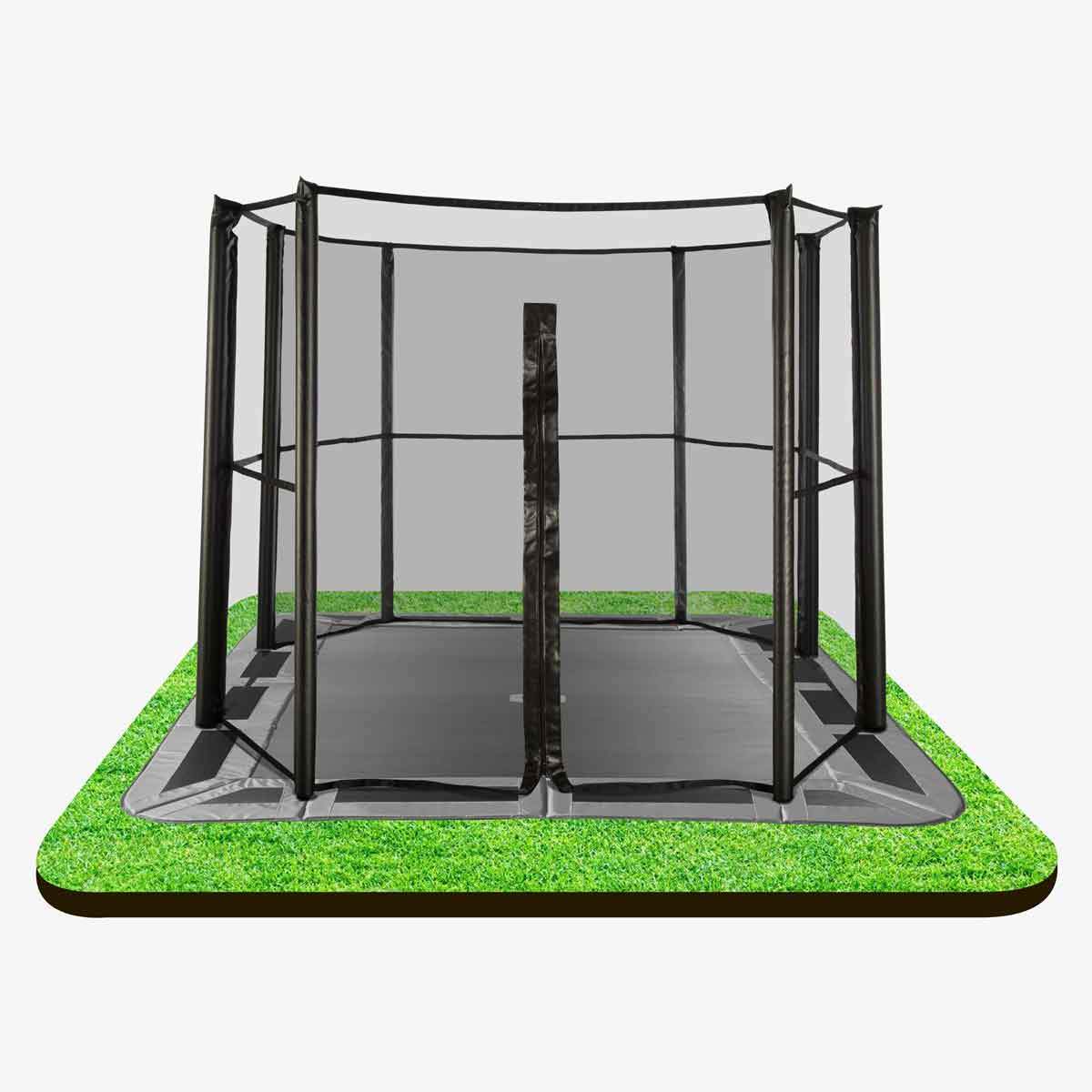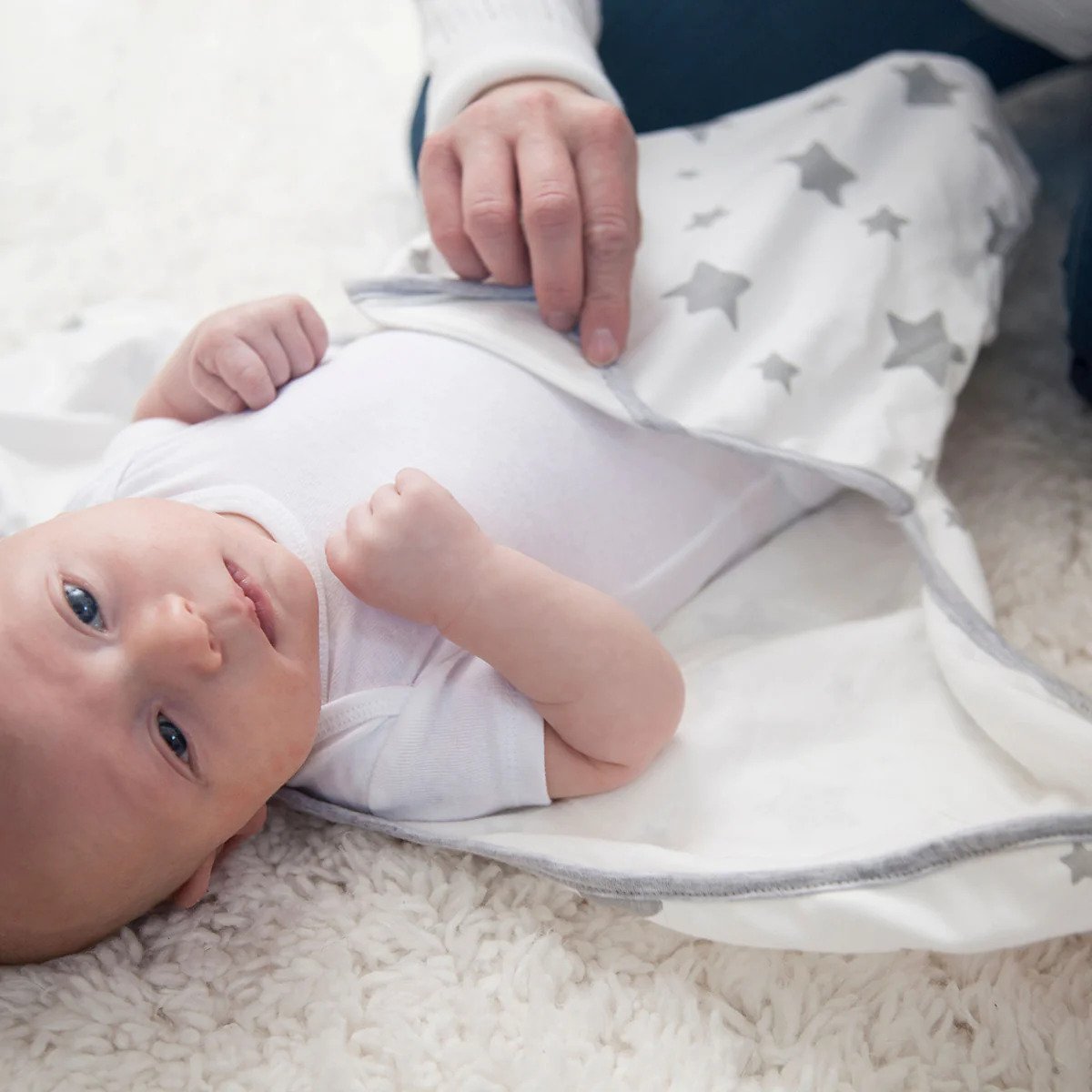

Articles
How Big Is A Swaddle Blanket
Modified: January 6, 2024
Discover the perfect size for swaddle blankets with our informative articles. Find out how big swaddle blankets should be for your little one's comfort and safety.
(Many of the links in this article redirect to a specific reviewed product. Your purchase of these products through affiliate links helps to generate commission for Storables.com, at no extra cost. Learn more)
Introduction
Swaddle blankets have become an essential item for new parents around the world. These versatile and comforting blankets provide a sense of security and warmth for newborns, helping them feel safe and snug as they adjust to the outside world. But just how big is a swaddle blanket?
In this article, we will explore the different sizes of swaddle blankets and discuss the standard dimensions that you can expect to find on the market. We will also provide some tips on how to choose the right size swaddle blanket for your baby and highlight the benefits of using a swaddle blanket. Lastly, we will touch upon important safety guidelines that should be followed when swaddling your little one.
Whether you are a soon-to-be parent or someone looking to gift a swaddle blanket to a loved one, this article aims to provide you with the information you need to make an informed decision. So, let’s dive in and learn more about the fascinating world of swaddle blankets!
Key Takeaways:
- Swaddle blankets come in various sizes, from small to large, to accommodate newborns and older infants. Choosing the right size ensures a snug and secure fit, promoting better sleep and reducing fussiness.
- Following safety guidelines is crucial when swaddling your baby. Choosing the right size blanket, monitoring temperature, and creating a safe sleep environment are essential for your baby’s well-being and comfort.
Read more: How To Swaddle A Baby With A Blanket
What is a Swaddle Blanket?
A swaddle blanket is a specially designed blanket that is used to wrap newborns snugly. The concept of swaddling dates back centuries and has been practiced in different cultures around the world. Swaddling helps recreate the feeling of being in the womb, providing comfort and security for the baby.
Swaddle blankets are typically made from soft and breathable fabrics such as cotton or muslin. They are large enough to fully wrap around the baby, allowing for a tight yet gentle swaddle. The purpose of swaddling is to restrict the baby’s movement, preventing them from startling themselves awake and promoting longer periods of sleep.
Swaddling has been found to have numerous benefits for newborns. It helps soothe fussy babies, promotes better sleep patterns, and can even reduce the risk of Sudden Infant Death Syndrome (SIDS). By creating a cozy environment, swaddle blankets can make the transition from the womb to the outside world a little easier for newborns.
It’s important to note that swaddle blankets are not intended for use once the baby begins to roll over or show signs of attempting to break free from the swaddle. At this stage, it’s safer to transition to other sleep practices that allow for more freedom of movement.
Swaddle blankets come in various sizes to accommodate babies of different ages and sizes. In the next section, we will explore the different sizes you can find when shopping for a swaddle blanket.
Different Sizes of Swaddle Blankets
Swaddle blankets are available in a range of sizes to suit the needs of newborns and older infants. The size of the swaddle blanket you choose will depend on the age and size of your baby. Here are the different sizes you can expect to find:
- Small: Small swaddle blankets are typically designed for preemies or newborns up to 10 pounds in weight. These blankets are smaller in size to ensure a snug and secure fit for tiny babies.
- Medium: Medium swaddle blankets are suitable for infants between 10 and 16 pounds. They provide enough fabric to wrap the baby comfortably, allowing for movement while still maintaining a sense of security.
- Large: Large swaddle blankets are intended for babies weighing over 16 pounds. These spacious blankets offer ample room for swaddling larger infants while ensuring they are cozy and safe.
It’s important to choose the right size swaddle blanket for your baby to ensure a proper fit. A blanket that is too small may not provide enough coverage and security, while a blanket that is too large can be difficult to wrap properly and may pose a safety risk.
Most swaddle blankets are designed with some stretch and flexibility to allow for a snug yet comfortable fit. This ensures that the blanket can be securely wrapped around the baby without restricting their movements or causing discomfort.
When selecting a swaddle blanket, it’s also worth considering the fabric’s breathability and softness. Cotton and muslin are popular choices as they are gentle on the baby’s delicate skin and allow for proper airflow, preventing overheating.
Now that you are familiar with the different sizes of swaddle blankets, let’s move on to discussing the standard dimensions you can expect when shopping for one.
Standard Dimensions of Swaddle Blankets
Swaddle blankets come in a variety of sizes, but there are some standard dimensions that you can expect to find when shopping for one. These dimensions may vary slightly depending on the manufacturer and design, but here are the typical measurements:
- Small: Small swaddle blankets usually measure around 28 to 30 inches wide and 34 to 36 inches long. These dimensions are perfect for wrapping little ones in a snug and secure swaddle, providing a comforting environment.
- Medium: Medium swaddle blankets often measure approximately 30 to 32 inches wide and 36 to 40 inches long. These dimensions are suitable for infants who have outgrown the small size but still need a proper wrap.
- Large: Large swaddle blankets typically measure around 36 to 40 inches wide and 44 to 48 inches long. These bigger dimensions are designed to accommodate older infants or babies who prefer a little more room to move while being swaddled.
It’s important to note that these dimensions are approximate and can vary depending on the specific brand or style of the swaddle blanket. Some brands may offer swaddle blankets with adjustable features, such as Velcro or snaps, to help customize the fit and accommodate babies of different sizes.
When choosing a swaddle blanket for your baby, consider their weight and length to ensure that the blanket will be the right size. It should be spacious enough to allow for proper wrapping and comfort, while also providing the security and snugness that swaddling is known for.
Keep in mind that babies grow quickly, so it’s a good idea to have a few different sizes of swaddle blankets on hand to accommodate their changing needs. As your baby grows and develops, you may need to transition to a larger size swaddle blanket or explore other sleep options altogether.
Now that we’ve discussed the different sizes and standard dimensions of swaddle blankets, let’s move on to the next section, where we’ll explore how to choose the right size swaddle blanket for your baby.
When choosing a swaddle blanket, consider a size of at least 47×47 inches to ensure it is large enough to properly wrap and secure your baby.
How to Choose the Right Size Swaddle Blanket
Choosing the right size swaddle blanket for your baby is crucial to ensure a safe and comfortable swaddling experience. Here are some tips to help you select the appropriate size:
- Consider your baby’s weight and age: Take into account your baby’s weight and age when choosing a swaddle blanket. Many swaddle blankets are labeled with weight ranges, such as preemie, newborn, or 0-3 months, to help guide you in selecting the right size.
- Measure your baby’s height: In addition to weight, measuring your baby’s height can also be helpful in determining the appropriate size. Refer to the manufacturer’s sizing chart or description to ensure a proper fit.
- Consider your baby’s individual needs: Every baby is unique, and their preferences for swaddling may differ. Some babies may prefer a snugger fit, while others may need a bit more room to move their legs or arms. Observing your baby’s movements and comfort level can guide you in selecting the right size.
- Choose adjustable options: If you’re unsure about the exact size, opt for swaddle blankets with adjustable features such as Velcro or snaps. These can offer a more customized fit and allow for flexibility as your baby grows.
- Take into account the fabric: Different fabrics may have different levels of stretch and flexibility. Keep this in mind when choosing a swaddle blanket size. Some fabrics may provide a bit more give, accommodating a wider range of sizes, while others may be more rigid in their dimensions.
- Have multiple sizes on hand: Babies grow quickly, and what fits perfectly one month may become too small the next. It’s a good idea to have a variety of swaddle blanket sizes on hand to accommodate your baby’s changing needs as they continue to grow.
Remember, the goal of swaddling is to create a secure and comforting environment for your baby, so it’s important to choose a size that allows for proper wrapping without restricting movement or causing discomfort.
Next, we will explore the benefits of using a swaddle blanket for your baby. Stick around to discover why swaddling is a popular practice among parents!
Read more: What Is A Swaddling Blanket
Benefits of Using a Swaddle Blanket
Swaddle blankets offer a range of benefits for both babies and parents. Here are some advantages of using a swaddle blanket:
- Promotes better sleep: Swaddling helps recreate the cozy and secure feeling of the womb, which can promote better sleep for babies. The gentle pressure and snugness of the swaddle blanket can help soothe fussy infants and reduce their startle reflexes, allowing for longer and more restful sleep.
- Reduces crying and fussiness: Swaddle blankets can provide comfort to babies by mimicking the feeling of being held or cuddled. This can help reduce crying and fussiness, especially during the early months when babies are adjusting to life outside the womb.
- Supports self-soothing: Swaddling can help babies learn to self-soothe by preventing them from scratching their faces or startling themselves awake with their own movements. By creating a calm and secure environment, swaddle blankets can aid in the development of self-soothing skills.
- Creates a comforting environment: Swaddle blankets create a gentle, all-encompassing embrace that can provide a sense of security for babies. This can help them feel more settled and calm, especially during times of change or when they are feeling overwhelmed.
- Reduces the risk of SIDS: Swaddling with safe sleep practices has been linked to a reduced risk of Sudden Infant Death Syndrome (SIDS). The snugness of the swaddle can prevent babies from rolling onto their stomachs, which is a known risk factor for SIDS. It’s important to follow safe swaddling guidelines to ensure the safety of your baby while swaddling.
- Facilitates easier breastfeeding: Swaddle blankets can make breastfeeding easier for both baby and mother. By swaddling, babies’ arms are kept close to their bodies, minimizing distractions and allowing them to focus on feeding. Swaddling can also help babies stay latched on for longer periods, promoting more efficient feeding sessions.
These are just a few of the benefits that swaddle blankets offer. Many parents find that swaddling helps create a peaceful and calming environment for their little ones, fostering better sleep habits and overall well-being.
However, it’s important to note that every baby is different, and what works for one may not work for another. Pay attention to your baby’s cues and comfort level when using a swaddle blanket, and always prioritize their safety and well-being.
Speaking of safety, let’s dive into some important guidelines for swaddling to ensure that it is done properly and safely.
Safety Guidelines for Swaddling
While swaddling can provide many benefits for babies, it’s important to follow safety guidelines to ensure their well-being. Here are some important safety tips to keep in mind when swaddling your baby:
- Choose the right size: Use a swaddle blanket that is appropriate for your baby’s size and weight. The blanket should allow for proper wrapping without being too tight or restrictive.
- Leave room for hip movement: Make sure that the swaddle blanket leaves enough room for your baby’s hips and legs to move freely. Tight swaddling that restricts hip movement can increase the risk of hip dysplasia.
- Positioning is key: Always place your baby on their back to sleep while swaddled. This is the safest sleep position and reduces the risk of Sudden Infant Death Syndrome (SIDS).
- Avoid overheating: Babies can easily become overheated, so it’s important to dress them appropriately for the temperature of the room. Use a lightweight and breathable swaddle blanket to prevent overheating.
- Monitor the baby’s temperature: Check your baby’s temperature regularly while swaddled to ensure they are not too warm. Feel the back of their neck or use a thermometer to ensure they are comfortable and not overheated.
- Stop swaddling when rolling: Once your baby shows signs of rolling over or attempting to break free from the swaddle, it’s time to transition to other sleep practices. Continuing to swaddle when a baby can roll onto their stomach can increase the risk of suffocation.
- Safe sleep environment: Always place your swaddled baby on a firm mattress, free from loose bedding, pillows, or stuffed animals. These can pose suffocation hazards.
- Learn proper swaddling technique: Take the time to learn and practice proper swaddling techniques to ensure that the blanket is secure and does not unravel during sleep. Loose blankets can cover the baby’s face and increase the risk of suffocation.
- Seek guidance if uncertain: If you are unsure about how to properly swaddle your baby or have any concerns, consult with a healthcare professional or seek guidance from a certified baby care expert.
Following these safety guidelines will help ensure that your baby stays safe and comfortable while swaddled. It’s important to remember that swaddling should only be done for newborns and young infants, and discontinued once they start showing signs of rolling over or attempting to escape the swaddle.
Now that we’ve covered the safety guidelines, let’s wrap up and summarize the key points we’ve discussed in this article.
Conclusion
Swaddle blankets are a wonderful tool for providing comfort and security to newborns and young infants. Understanding the different sizes and standard dimensions of swaddle blankets is essential for selecting the right size to ensure a proper fit.
By choosing the appropriate size swaddle blanket, you can create a snug and cozy environment for your baby that promotes better sleep, reduces fussiness, and supports self-soothing. Swaddling can also have the added benefit of reducing the risk of SIDS when practiced safely.
Remember to always follow safety guidelines when swaddling, including using the right size blanket, leaving room for hip movement, and ensuring a safe sleep environment. Monitoring your baby’s temperature and adjusting clothing accordingly will help prevent overheating.
As your baby grows and develops, you may need to transition from swaddling to other sleep practices that allow for more freedom of movement. Pay attention to your baby’s cues and consult with healthcare professionals or experts if you have any questions or concerns.
In conclusion, swaddle blankets provide both parents and babies with numerous benefits. They create a comforting and secure environment for infants to thrive in, promoting better sleep and soothing fussy little ones. By understanding swaddle blanket sizes, safety guidelines, and the advantages they offer, you can make informed choices to enhance your baby’s sleep routine and overall well-being.
So, whether you’re preparing for the arrival of a newborn or looking for the perfect gift for new parents, consider the magical world of swaddle blankets and the joy they can bring to both baby and caregiver.
Frequently Asked Questions about How Big Is A Swaddle Blanket
Was this page helpful?
At Storables.com, we guarantee accurate and reliable information. Our content, validated by Expert Board Contributors, is crafted following stringent Editorial Policies. We're committed to providing you with well-researched, expert-backed insights for all your informational needs.
